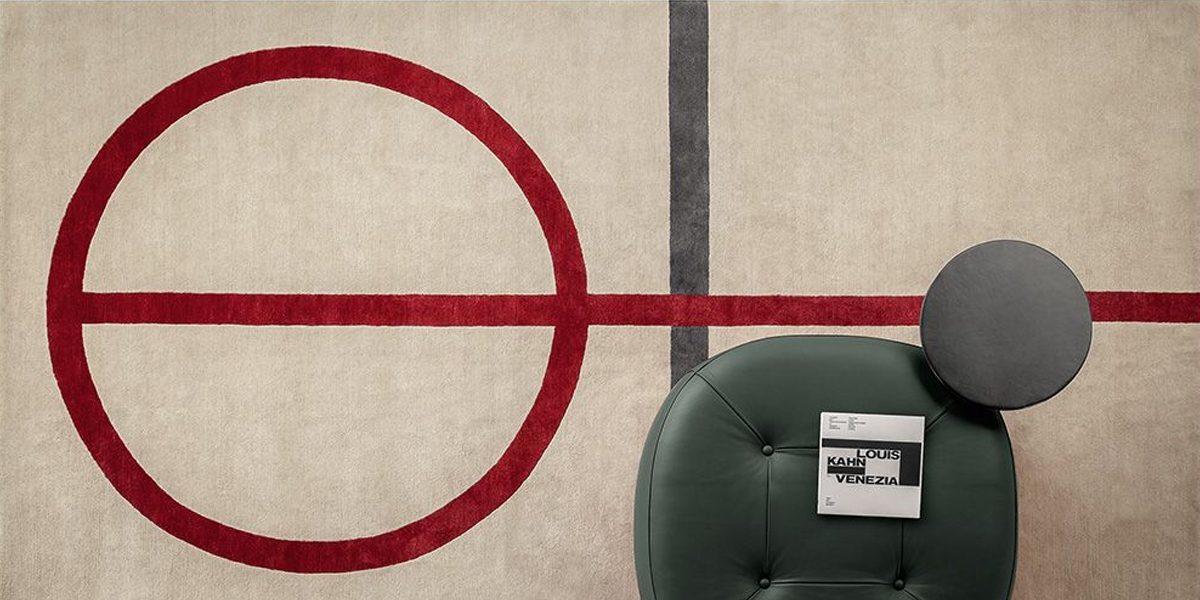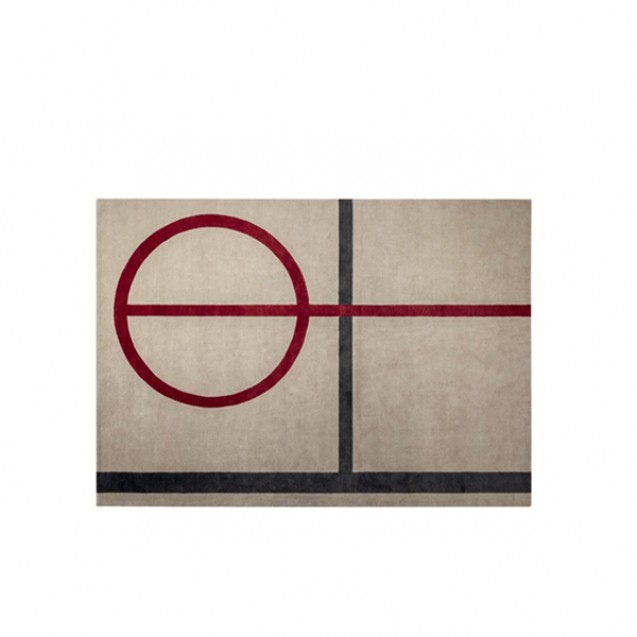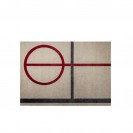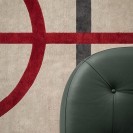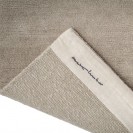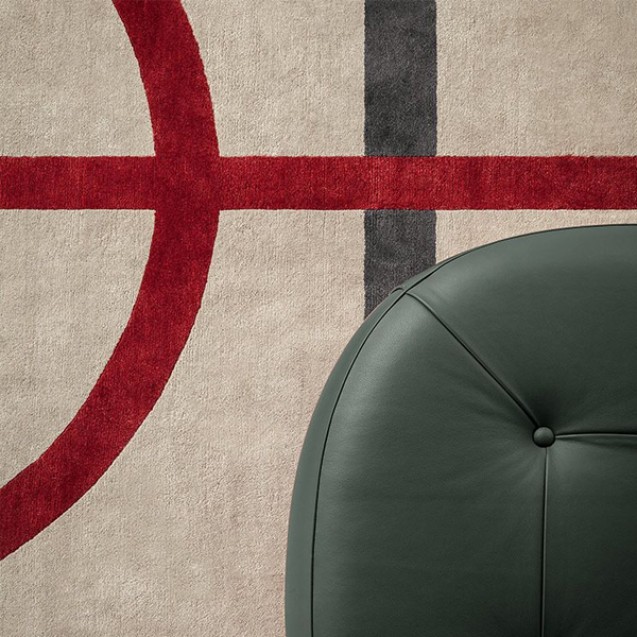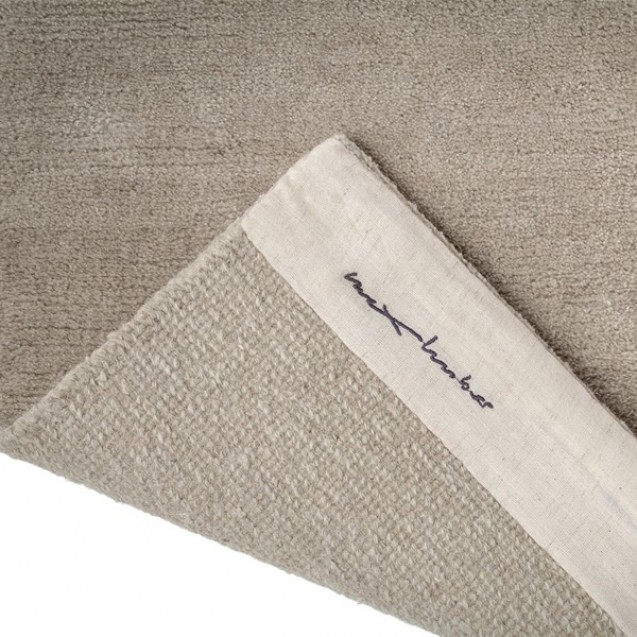I Tappeti - Billie
To mark the hundredth
anniversary of the birth of Max
Huber, Poltrona Frau pays
homage to the famous Swiss artist and graphic designer with Billie and Dizzy, a
collection of rugs based on drawings of two unproduced works taken from the
archive and dating respectively to 1936 and 1947. The original designs have
remained unchanged in terms of their proportions and the thickness of their
lines and have simply been adapted to the dimensions of the rugs. The Billie rug is named after Billie
Holiday, one of the most beautiful and soulful jazz voices of the early 20th
century. A tribute to a genre of music much loved by the artist and a passion
that influenced his work. As well as his famous works for Esselunga, La
Rinascente, Coin, Rai and Montecatini, during his career Max Huber carried out
lots of projects connected with this form of music, such as “Ritmo” magazine in
1950 and “Jazztime” in 1952, the cover of jazz encyclopaedia “Messaggerie
Musicali” in 1952, and the poster for the “Jazz Chiasso weeks” festival of
1985. Billie has a rigorous, almost constructivist design that takes up most of
the surface of the rug. The graphic is seemingly straightforward, consisting of
a few elements highly calibrated in every single detail. Just two graphics on a
neutral background: one an intense red, formed by a circle and a vertical line,
and the other in anthracite coal grey and made up of two perpendicular lines.
The result is a rug with strong formal balance and notable visual impact. In
order to respect the original project and proportions, Billie is available in
just one size, 250X350 cm, and one colour variant. It is refined with a
hand-stitched woollen trim on all four sides. The Billie rug is entirely
handmade on wooden looms using the Tibetan knot technique. Its knots are very
dense, 70,000 per m2, to create a very compact and soft surface. It
is 50% wool and 50% linen, carefully selected natural fibres that give the rug
a velvety and slightly glossy appearance with chiaroscuro and different colour
effects depending on your angle of perspective. The Billie rug is distinctive
for the saddle-leather label hand-sewn on the back stamped with the Poltrona
Frau logo. To keep the corners rigid, two strips of fabric are sewn onto the
back of the rug and embroidered with Max Huber’s signature.
| About Designer | |
|---|---|
Max Huber |
Max Huber
was born in Baar, in the canton of Zug, in 1919 and after attending middle
school he studied graphics at the Kunstgewerbeschule in Zurich, where he
followed the lessons of Alfred Willimann with particular enthusiasm. During
this period he made the acquaintance of numerous Swiss graphic designers and
artists including Werner Bischof, Emil Schulthess, Josef Müller-Brockmann,
Carlo Vivarelli, Hans Falk, Hans Neuburg and Max Bill. Eager to embark on a new
experience, in 1940 Max Huber found work at the prestigious graphic design
studio of Antonio Boggeri in Milan, where he met Bruno Munari, Luigi Veronesi
and Albe Steiner. He returned to Switzerland just one year later due to the
difficult political climate. Max Bill subsequently invited him to join Allianz,
the association of modern Swiss artists that formed part of the “concrete art”
school and whose other members included Hans Arp and Richard Paul Lohse. In
October 1945 he returned to Milan and together with Albe Steiner created the
graphic design project for the VIII Triennale of 1947. In this period he met
Giulio Einaudi who made him creative director of his publishing house. The same
year he designed the graphics project and the little catalogue for the Abstract
and Concrete Art exhibition curated by Max Bill with Lanfranco Bombelli
Tiravanti at the prestigious Palazzo Reale in Milan. In 1949, still in the
capital of Lombardy, he joined the Concrete Art Movement founded the previous
year by Gillo Dorfles, Gianni Monnet, Bruno Munari and Atanasio Soldati and took
part in the IV “cartella grafica”. Later, from the 1950s onwards, he
distinguished himself in the graphic design sector. Examples of his work
include the corporate identities of La Rinascente, Coin, Nava and supermarket
chain Esselunga, as well as installations for the Omega and Flos showrooms in
Milan. At this time he also began a prolific collaboration with
architects/designers Achille and Pier Giacomo Castiglioni, sharing, with his
archigraphic project, his ideas for numerous installations for Rai, Eni and
Montecatini (later Montedison). Public acclaim would soon follow and in 1954
Max Huber was awarded the Italian “Compasso d’Oro” design prize for his design
for a “plastic fabric”. Not to be overlooked is his long and continuous
teaching career which he began in Milan at the Rinascita school in 1947,
continued between 1959 and 1962 at the Umanitaria, and resumed once more in the
1970s at the Scuola Politecnica di Design directed by Bruno Munari with Nino Di
Salvatore. Between 1978 and 1984 Max Huber took his teaching experience to
Switzerland, teaching graphic design at the CSIA-Centro Scolastico Industrie
Artistiche in Lugano. He died on 16 November 1992. |
